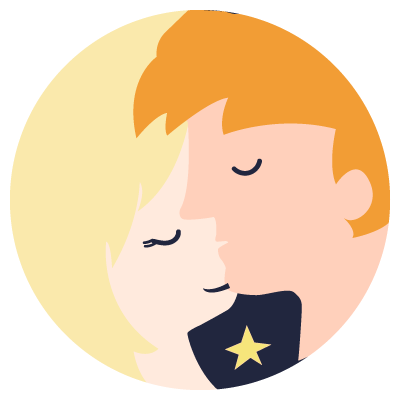Tarot Today Online
Online Tarot reading, from a classic tarot spread to a 10-card tarot spread. We have all your answers.
What Should I Choose?
10 Card Tarot Spread
Find a reading particular to your situation. We have one for money, career and success, mending fences, attracting prosperity, relationship insights. romantic relationship and partnerships.
Classic Tarot Card Spread
Classic tarot spreads that cover the areas of: making choices, horseshoe spread, horoscope spread and Celtic cross.
Get the best hypnosis products for relaxation, stop smoking, weight control and more. Do it from the comfort and privacy of your home.
What is Tarot?
 Tarjeta de Muerte en el Tarot Español
Tarjeta de Muerte en el Tarot Español
Tarot, had earlier names like tarocchi or tarocks, and were in use from approximately the mid-15th century in Italy, where it spread throughout Europe. Present day thre are two type of decks. Those used for card games and the other for divination. Some like the Tarot de Marseille originated as a card game but were used for cartomancy.
The word taroch was used to mean foolishness in the late 15th and early 16th centuries.
The tarot has four suits, each with 14 cards. The earliest cards were hand-painted, and it was after the invention of the printing press that mass production became possible.
Early French occultists claimed the tarot cards were linked to the Kabbalah, ancient Egypt the Tanta or I Ching. Tarot cards are referred to as arcana with the Fool and 21 trumps being the Major Arcana, and the suit cards the Minor Arcana. These are divided into the batons or clubs, coins, swords and cups.
Research has found that the early European cards were based on the Egyptian Mamluk deck invents prior to the 14th century.
The only condemnation found against the tarot was when a Dominican preacher in the 15th century, warned against the playing cards due to the evils of gambling.
The earliest reference to using a tarot deck for cartomancy comes from an anonymous manuscript dating to 1750, which describes divinatory meaning for the cards.
The Major Arcana (greater secrets) consists of 22 cards without suits. Their names and numbers vary, but in a typical scheme, the names are:
The Magician, The High Priestess, The Empress, The Emperor, The Hierophant, The Lovers, The Chariot, Strength, The Hermit, Wheel of Fortune, Justice, The Hanged Man, Death, Temperance, The Devil, The Tower, The Star, The Moon, The Sun, Judgement, The World, and The Fool. Cards from The Magician to The World are numbered in Roman numerals from I to XXI, while The Fool is the only unnumbered card, sometimes placed at the beginning of the deck as 0, or at the end as XXII.
The Minor Arcana (lesser secrets) consists of 56 cards, divided into four suits of 14 cards each. They are:
Ten numbered cards and four court cards. The court cards are the King, Queen, Knight and Page/Jack, in each of the four tarot suits. The traditional Italian tarot suits are swords, batons, coins and cups; however, in modern occult tarot decks, the suit of batons is often called wands, rods or staves; the suit of coins is often called pentacles or disks and the suit of cups is often referred to as goblets.
The word taroch was used to mean foolishness in the late 15th and early 16th centuries.
The tarot has four suits, each with 14 cards. The earliest cards were hand-painted, and it was after the invention of the printing press that mass production became possible.
Early French occultists claimed the tarot cards were linked to the Kabbalah, ancient Egypt the Tanta or I Ching. Tarot cards are referred to as arcana with the Fool and 21 trumps being the Major Arcana, and the suit cards the Minor Arcana. These are divided into the batons or clubs, coins, swords and cups.
Research has found that the early European cards were based on the Egyptian Mamluk deck invents prior to the 14th century.
The only condemnation found against the tarot was when a Dominican preacher in the 15th century, warned against the playing cards due to the evils of gambling.
The earliest reference to using a tarot deck for cartomancy comes from an anonymous manuscript dating to 1750, which describes divinatory meaning for the cards.
The Major Arcana (greater secrets) consists of 22 cards without suits. Their names and numbers vary, but in a typical scheme, the names are:
The Magician, The High Priestess, The Empress, The Emperor, The Hierophant, The Lovers, The Chariot, Strength, The Hermit, Wheel of Fortune, Justice, The Hanged Man, Death, Temperance, The Devil, The Tower, The Star, The Moon, The Sun, Judgement, The World, and The Fool. Cards from The Magician to The World are numbered in Roman numerals from I to XXI, while The Fool is the only unnumbered card, sometimes placed at the beginning of the deck as 0, or at the end as XXII.
The Minor Arcana (lesser secrets) consists of 56 cards, divided into four suits of 14 cards each. They are:
Ten numbered cards and four court cards. The court cards are the King, Queen, Knight and Page/Jack, in each of the four tarot suits. The traditional Italian tarot suits are swords, batons, coins and cups; however, in modern occult tarot decks, the suit of batons is often called wands, rods or staves; the suit of coins is often called pentacles or disks and the suit of cups is often referred to as goblets.





















